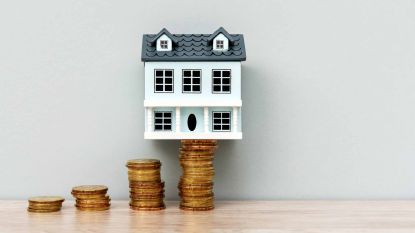Home prices declined for a third straight month in September amid a rapidly cooling housing market.
The longest streak of monthly declines in a decade comes courtesy of a surge in mortgage rates, which have been fostered by the Federal Reserve in order to halt inflationary pressures across the economy.
For the record, the S&P CoreLogic Case-Shiller National Home Price Index (opens in new tab) fell 1% in September from August. The index, which measures homes prices across the U.S., has lost 2.6% of its value over the past three months.
Subscribe to Kiplinger’s Personal Finance Be a smarter, better informed investor.
Save up to 74%
Sign up for Kiplinger’s Free E-Newsletters Profit and prosper with the best of Kiplinger’s expert advice on investing, taxes, retirement, personal finance and more – straight to your e-mail.
Profit and prosper with the best of Kiplinger’s expert advice – straight to your e-mail.
Year-over-year, home prices rose 10.6% in September, boosted by low levels of housing inventory.
“As the Federal Reserve continues to move interest rates higher, mortgage financing continues to be more expensive and housing becomes less affordable,” Craig Lazzara, managing director at S&P Dow Jones Indices, said in a press release (opens in new tab). “Given the continuing prospects for a challenging macroeconomic environment, home prices may well continue to weaken.”
To get a sense of what the experts make of the latest reading on home prices, below please find select commentary from economists, strategists and other market pros, sometimes edited for brevity.
“The S&P Index fell 1.24% month-over-month, coming in right around expectations (Barclays and consensus -1.2% month-over-month) and the first time since 2012 showing three consecutive months of declines. Recent trends have begun to chip away at the robust increases over the past year, with prices still up 10.43% year-over-year. In September, major U.S. cities showed continued declines, reflecting the Fed’s interest rate hike path affecting the housing market.” – Colin Johanson, U.S. macroeconomic research analyst at Barclays”It is clear that the slowdown in the housing market continues but the weakness is not homogeneous across the country. In fact, six out of the nine regions of the country saw home prices increase in September compared to the previous month while all of them saw home prices increase on a year earlier basis. Meanwhile, every region of the country saw home prices increase compared to a year earlier. The highest year-over-year increase in home prices was in the South Atlantic region, up 15.2, followed by the East South-Central region, with an increase of 14.0%, the West South-Central region, up 11.1%, the East North Central region, up 10.4%, and the Middle Atlantic region, up 10.1%.” – Eugenio Alemán, chief economist at Raymond James”The tech industry’s correction is having an outsize impact on house prices and valuations in the Bay Area and Pacific Northwest, but price declines in the rest of the country are less severe. Surging mortgage rates and high prices have led to a big pullback in home construction and sales, but aside from the big pullback in tech-centric metros, national house prices have so far seen only modest decreases. Housing will be a headwind to the broader economy over the next year, but a mid-2000s style blowup seems quite unlikely. Mortgage underwriting standards became much stricter after the Great Recession. And most homeowners have lots of equity in their homes and stronger balance sheets generally than when the last housing boom went bust. Even so, the continued pullback in the housing and commercial real estate markets is going to be a major headwind to the economy, likely holding real GDP growth to near zero in 2023 and leading to a moderate increase in the unemployment rate from its current very low level.” – Bill Adams, chief economist for Comerica Bank”The S&P Case-Shiller 20-city composite index showed the U.S. housing market sputtered further in September, with prices falling 1.2% month-over-month. That was the third straight decline as higher borrowing costs continue to push aside potential buyers and slow demand. And, while annual price growth is still holding in the double-digits, up 10.4% year-over-year, it’s slowing pretty quickly, and is down from the above-20% growth seen earlier this year.” – Priscilla Thiagamoorthy, economist at BMO Capital Markets”As home prices cool, the ‘owners equivalent rent’ component in Consumer Price Index is expected to moderate, which will be one of the keys to helping inflation cool off.” – Louis Navellier, chairman and founder of Navellier & Associates
